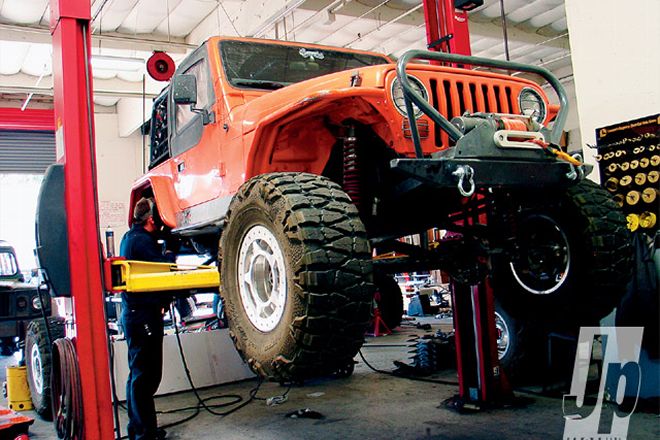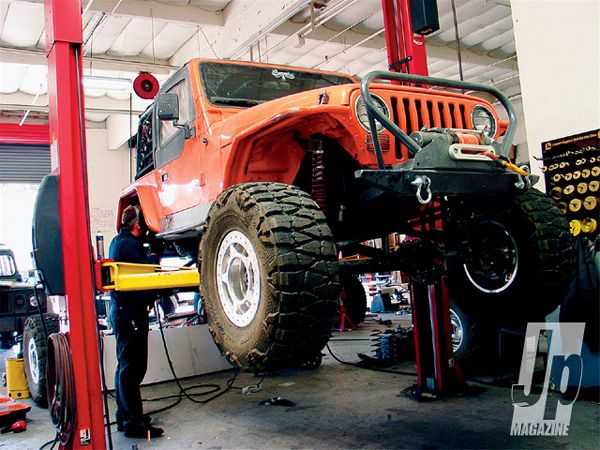
 Christian Hazel
Brand Manager, Four Wheeler
Christian Hazel
Brand Manager, Four Wheeler

The last time we messed with the suspension on Jay Miller's TJ we showed you how to convert to coilovers using top-quality Walker Evans 16-way adjustable shocks, Eibach Springs, and some simple shock mounts from Currie Enterprises. The story is on our web site at jpmagazine.com if you want a refresher. Well, the Jeep is back and this time we're tackling the back end, ditching the factory coil setup for some clean, simple coilovers.
If you do read our original "Coil Correction" story, you'll see that we used relatively short 10-inch Walker Evans shocks up front. Because Miller only wanted a 2.5- to 3-inch lift, it seemed prudent at the time. However, Miller discovered that the shorter shocks tended to top out during hard running. We ordered up some 12-inch Walker Evans coilover shocks and mounted them up front. We used the shorter 10-inch shocks originally in the front for our rear coilover conversion. Check the sidebar "Spec Sheet" for all the part numbers. The Walker shocks offer performance that can only be described as phenomenal. With a huge range of valving adjustments easily reached at the end of the remote reservoir, heavy-duty chrome-moly shafts, a T-6 body with anodized ends, and a 2-inch diameter, you'd be hard-pressed to find a better working, better looking shock for your Jeep. And like before, we tapped Eibach's seemingly infinite selection of coils to hang the framerails above the axles. The Eibach springs are powdercoated for corrosion resistance and are made in the USA to ensure a long, sag-free life.
With the Walker shocks on the way, we did some searching for a simple yet strong mounting solution and found it at Gen-Right Off Road. Gen-Right has been coming on like gangbusters over the past couple of years with a huge arsenal of Jeep suspension, body armor, protection, fuel tank, and any number of other components you can think of. We get lost in buildup dreams whenever we log onto the company's website to check out their latest offerings, so plan a little time in your day before logging on. Follow along as we mooch a rack at TAG Motorsports in Escondido, California, to finish our coilover transformation on this '97 TJ.
Spec Sheet
Here's a complete rundown of the parts we used to convert this Wrangler to a full coilover suspension.Front Shocks: Walker EvansPN 700-16-010
Rear Shocks: Walker EvansPN 700-16-012
Spring Isolators: Walker EvansPN 220349
Front Springs: EibachPN 1000-250-0150PN 1400-250-0400
Rear Springs: EibachPN 1000-250-0225PN 1200-250-0400
Front Coil Buckets: Currie Enterprises PN CE-9602
Rear Coil Buckets: Gen-Right Off Road PN RSM 1001











